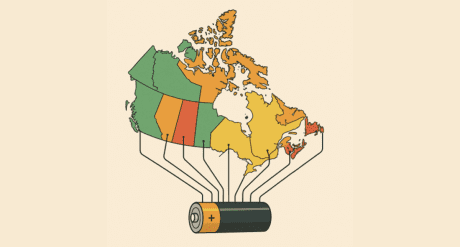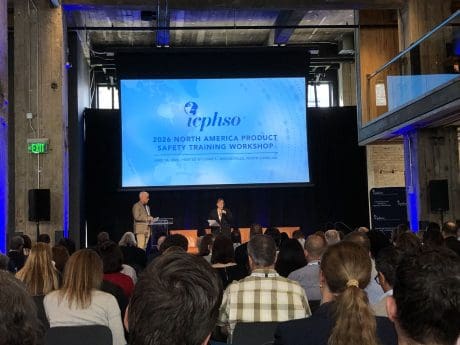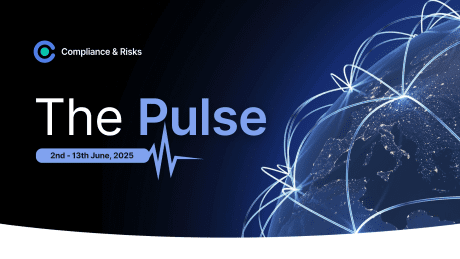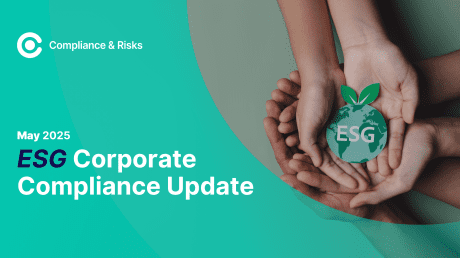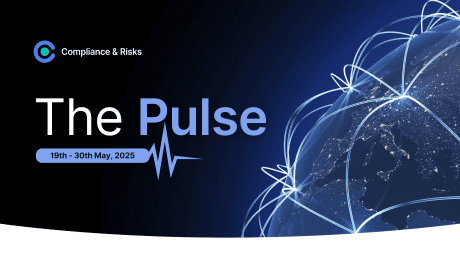
The Weekly Pulse: 6th – 10th February
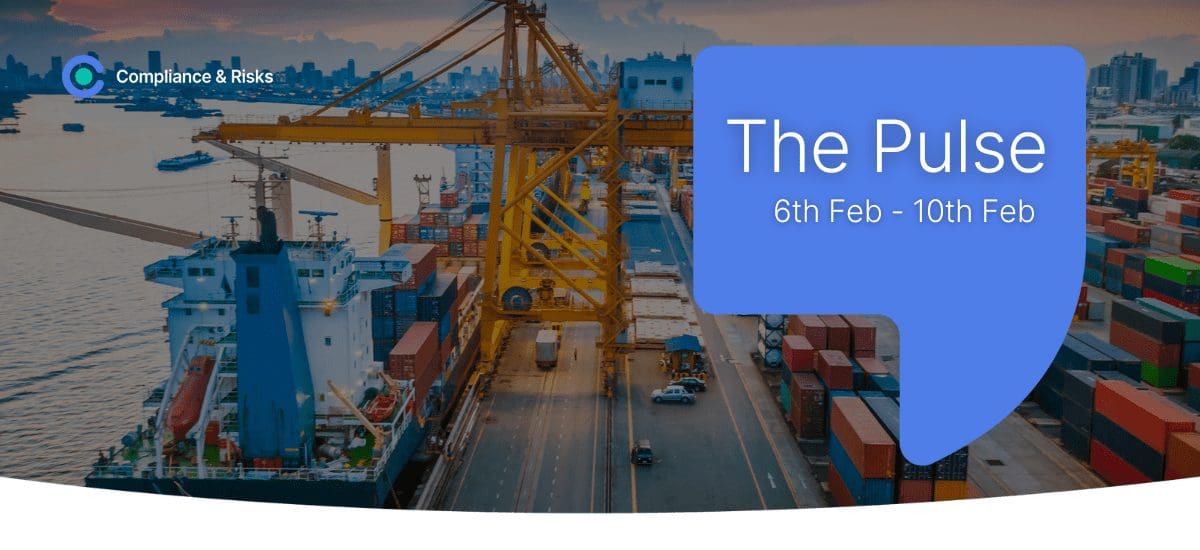
What’s HOT in our Regulatory World
What are our clients looking at?
This week’s trending sources in C2P
- Vermont (USA): Regulating Products containing Certain Chemicals and Chemical Classes (including PFAS), House Bill 152, January 2023
- Minnesota (USA): Prohibiting PFAS in Certain Products, Senate File 834, 2023
- South Korea: Revision of Certain Korean Industrial Standards (KS), Notice No. 2023-710
What is our Content Team talking about?
EU Council and European Parliament reached provisional agreement on the EU Draft Battery Regulation – Celia Le Lievre
On 9 December 2022, the EU Council and European Parliament reached a provisional agreement on a new proposal to strengthen EU legislation on batteries and waste batteries. The agreement proposes to enact a new regulation which, in essence, aims to establish a circular economy for the battery sector and make all batteries more sustainable throughout their entire lifecycle.
This initiative builds on the ambitions of the Circular Economy Action Plan and the European Green Deal. A final provisional version of this draft regulation was published on 18 January 2023. If enacted, the new regulation will repeal the existing Batteries Directive (after 24 months after it enters into force) and amend Regulation (EU) No 2019/1020 on market surveillance and compliance of products.
In terms of scope, the new regulation would apply to all categories of batteries placed on the market or put into service within the EU, regardless of whether they were produced in the Union or imported. As such, the rules concern not only batteries that are placed on the market on their own but also batteries that are designed to be incorporated into appliances or products or otherwise supplied with electrical and electronic appliances, light means of transport, and vehicles. The following categories of batteries are explicitly listed: portable batteries, SLI batteries, light means of transport batteries, electric vehicle batteries, and industrial batteries.
Some of the key aspects of this proposal are captured below:
Sustainability requirements
This new proposal introduces sustainability requirements and reinforced EPR obligations with respect to carbon footprint, collection and recycled content, performance and durability of new batteries.
The proposal sets targets for producers to maintain durability and achieve collection targets for portable batteries. Producers or producer responsibility organizations would be required to attain the following collection targets for waste portable batteries: 45% by 31 December 2023; 63% by the end of 2027 and 73% by the end of 2030. Likewise, producers will be expected to achieve a minimum collection objective of 51% in 2028 for LMT batteries (batteries for light means of transport). This target will be increased to 61% in 2031.
The proposal sets out high levels of recovery for materials including lithium, lead, cobalt, nickel, and copper. Mandatory minimum levels of recovered content are set at 16% for cobalt, 85% for lead, 6% for lithium, and 6% for nickel.
What is more, the draft requires that a carbon footprint declaration be prepared for each battery model for rechargeable industrial batteries (with a capacity above 2 kWh), light means of transport batteries, and electric vehicle batteries. The declaration would be mandatory for EV batteries, LMT batteries, and rechargeable industrial batteries with a capacity above 2kWh.
Due diligence obligations
Another critical aspect is the introduction of due diligence obligations for economic operators placing batteries on the EU market. The due diligence obligations adopt the risk-based approach mandated that OECD Guidelines, such as the Due Diligence Guidance for Responsible Supply Chains of Minerals from Conflict-Affected and High-Risk Areas. The proposal requires the adoption of supply chain due diligence policies concerning critical raw minerals identified in Annex X (i.e. cobalt, natural graphite, lithium, nickel, and their chemical compounds). The environmental and social risks associated with these materials must be identified and carefully assessed as part of a risk management plan. Economic operators must also establish and operate a system of controls and transparency over their supply chains.
Due diligence policies must be implemented within 24 months after the entry into force of the Regulation. They shall be verified and periodically audited by a thrid party.
Due diligence obligations will not apply to economic operators whose net turnover is less than EUR 40 million in the financial year preceding the last financial year.
Battery producers are also required to establish waste battery take-back and collection systems for portable batteries, SLI batteries, industrial batteries and electric vehicle batteries, and LMT batteries regardless of their nature, chemical composition, condition, brand, or origin.
Digital Battery Passport
Another innovation concerns the introduction of a Digital Battery Passport (DBP). The DBP is a digital record system that enables the transfer of information between parties. The passport will facilitate communication of information with end-users, second-life operators, and recyclers. The passport shall be accessible through a QR code which must be engraved or printed on the battery. The QR code will be linked to a unique identifier that the economic operator shall attribute to the battery.
In short, the digital passport will contain information relating to the battery model and information specific to the individual battery (as specified in Annex XIII). This information must include, among other things:
- Information for the general public, including the manufacturer’s identification, place and date of manufacture, weight, battery category, presence of critical raw materials etc;
- Material composition of the battery, including its chemistry and presence of hazardous substances contained in the battery other than mercury, cadmium or lead, and critical raw materials contained in the battery;
- Carbon footprint information;
- Share of renewable content;
- EU declaration of conformity;
- Information on responsible sourcing and due diligence policies;
Certain sensitive commercial information in the battery passport will only be accessible by market surveillance authorities and a limited number of persons with a legitimate interest. This applies to dismantling information, including safety, and detailed composition which is essential for repairers, remanufacturers, second-life operators and recyclers. It also applies to certain information concerning individual batteries, which is essential to those who have purchased the battery or other parties acting on their behalf for the purposes of:
- making the battery available to independent energy aggregators or energy market participants,
- evaluating the residual value or remaining lifetime for further use,
- preparing for re-use, preparing for repurpose, or repurposing or remanufacturing of the battery.
The EU Council and European Parliament must now officially endorse and adopt the new regulation before it can enter into force.
What are our Knowledge Partners talking about?
EU REACH – EU publish the draft Restriction proposal for PFAS – Cathy Phillips of Rina
The proposed EU restriction of around 10 000 per and poly-fluoroalkyl substances (PFASs) is now available to see as a pre-publication version on ECHA’s website, pending formal release following the ECHA Risk Assessment Committee and Socio-Economic Assessment Committee (RAC/SEAC) meeting next month. It aims to reduce PFAS emissions to the environment and make products and processes safer for people. The restriction will cover all PFAS in all uses above extremely low concentrations. It affects PFAS used on their own including intermediate use, PFAS in mixtures, and PFAS in articles including imports.
The PFAS restriction uses the same definition as the OECD: “Any substance that contains at least one fully fluorinated methyl (CF3-) or methylene (-CF2-) carbon atom (without any H/Cl/Br/I attached to it).” All substances and families of substances listed in the OECD list of PFASii can be considered included in the proposal, however this only lists 4730 substances, and the proposal covers far more.
The concentration limits above which the restriction applies, are onerous. They are:
- 25 ppb for any PFAS as measured with targeted PFAS analysis (polymeric PFASs excluded from quantification)
- 250 ppb for the sum of PFASs measured as sum of targeted PFAS analysis, optionally with prior degradation of precursors (polymeric PFASs excluded from quantification)
- 50 ppm for PFASs (polymeric PFASs included). If total fluorine exceeds 50 mg F/kg the manufacturer, importer or downstream user shall upon request provide to the enforcement authorities a proof for the fluorine measured as content of either PFASs or non-PFASs.
Where have I got PFAS?
PFAS are present in mixtures as surfactants, flow-aids and wetting agents, anti-foaming, and film-formers, PFAS are also used in working fluids, lubricants, and greases as additives to reduce friction, minimize wear and increase part life. They are used in firefighting fluids like advanced firefighting foams (AFFF) and Film Forming Fluoro-Protein (FFFP). They are used in various sprays such as release aids, stain-resistant treatments, and anti-seize. Many PFAS used in mixtures have no hazardous classification in the globally harmonized system for classification and labeling (CLP) and are not substances of very high concern (SVHC) on the candidate list, and therefore many PFAS are not shown on safety data sheets even though the substance is present.
In articles, PFAS are used as flame retardants and manufacturing aids in plastics and are used for surface coatings on all kinds of materials, including metals, textiles, leather and plastic, and rubbers. Based on the current proposal, all the following uses will be restricted:
- Fluoroelastomers FKM (Viton®) and FKKM (Kalrez®) are used for gaskets, seals, high temperature hoses and cables,
- Homopolymers such as Polytetrafluoroethylene (PTFE), and Polyvinylidene fluoride (PVDF, Kynar®) are used in many plumbing and pipework applications, both for water systems and in systems where pipe/valve corrosion and fluid contamination are risks,
- PFAS in electrical and electronic equipment (EEE), which is a very wide range. PFAS, for example, are in batteries, fiber optics, lasers, smartphones and tablets, computers, servers, and electronic component test fluids and test equipment. They can be found all the way down to small parts like semiconductor packages, PCB components (diodes, capacitors, etc), and PCBs themselves, wire, cable, glands, seals, and housings, and even in the packaging.
What does this restriction mean for my business?
After the Restriction enters into force, all PFAS will no longer be legal to use in their current applications in the EU or imported into the EU after the 18-month transition period. Although the timeline is not fully known, this could mean that the restriction could be implemented as soon as mid-2026.
The exception to this is if there is a derogation listed in the regulation, for 5 years with an 18-month transition period, or 12 years with an 18-month transition period. These derogations have to be agreed upon before the publication of the restriction, and there is currently no process for asking for derogation time periods to be extended. If your use can continue under one of the proposed derogations, any manufacturers or importers of PFAS will have annual reporting obligations to the regulator. In addition to this, any importers or downstream users of fluoropolymers and perfluoropolyether will need a management plan (available for enforcement inspection on request) for each site where they are used covering:
- The identify of the PFAS and the products that they are used in
- The justification of each use of the PFAS
- Details on the conditions of use and safe disposal.
The loss of the majority of PFAS applications from the market will have a significant impact on PFAS availability as the market adjusts. There are already signs of this triggering obsolescence before the regulatory changes, as 3M have announced that they will cease manufacture of PFAS by the end of 2025iii. If you want to stay on top of the recent regulatory developments, make sure to checkout our in-depth webinar covering PFAS.
RINA recommends:
- Identifying all uses of PFAS within your product portfolio, and in your manufacturing facilities, and start qualifying PFAS-free alternatives wherever possible.
- Wherever PFAS is required beyond mid-2026, your business and any sector trade association should engage with the regulator and provide detailed socioeconomic reasons for any derogation you request into the consultation before the end of the consultation period (22 September 2023) at the absolute latest. Otherwise, the use of the substance may likely no longer be permitted.
- Not assuming that proposed derogations are automatically granted: the regulator needs to know if the time frame is realistic, and in the proposal, many derogations require more detail to support their case before they are accepted and finalized. If you have relevant information provide it.
What happens next in the Restriction process?
ECHA’s scientific committees for Risk Assessment (RAC) and Socio-Economic Analysis (SEAC) meet in March 2023 to check that the proposal meets the legal requirements of REACH and if satisfied, they will upgrade the pre-publication version currently online to the formal published version for comment. Presuming they agree to the proposal, a six-month consultation will start on 22 March 2023. RAC and SEAC will then begin their scientific evaluation of the proposal.
The RAC will review early responses to the consultation and will develop their opinion in parallel to the public consultation. They will publish their opinion 6 weeks after the end of the consultation.
The SEAC will review all socioeconomic arguments that respondents choose to submit in the consultation period, and are likely to publish their responses between 22 March 24 and 22 June 2024, depending on the number of responses received.
There will then be an opportunity to comment on the SEAC and RAC opinions before they are issued to the European Commission and the restriction is likely to be finally agreed upon and published in late 2024 or during 2025. There will then be an 18-month transition period.
RINA recommends that manufacturers:
- Review their PFAS uses as a matter of urgency, identifying all PFAS upon which their product range relies,
- Respond to the consultation if affected by the PFAS restriction, which opens on 22 March 2023,
- Respond to the RAC and SEAC opinions when that consultation opens in approximately 12 – 15 months.
What are our clients asking about?
“Is there a list of the regulated perfluoroalkyl and polyfluoroalkyl substances or PFAS for California Assembly Bill 1817 ?“
Answer by Kelly Bugiera
Per this enacted legislation, the definition of “Regulated perfluoroalkyl and polyfluoroalkyl substances or PFAS” is either of the following:
- PFAS that a manufacturer has intentionally added to a product and that have a functional or technical effect in the product, including the PFAS components of intentionally added chemicals and PFAS that are intentional breakdown products of an added chemical that also have a functional or technical effect in the product.
- The presence of PFAS in a product or product component at or above the following thresholds, as measured in total organic fluorine:
– (A) Commencing January 1, 2025, 100 parts per million.
– (B) Commencing January 1, 2027, 50 parts per million.
Included in this legislation is also the following definition of “Perfluoroalkyl and polyfluoroalkyl substances” or “PFAS”:
– a class of fluorinated organic chemicals containing at least one fully fluorinated carbon atom.
I hope this is the information that you are looking for. If you have more questions, please let me know.
Stay Updated On Global Regulations With The Weekly Pulse
This information is based on the most viewed regulations on C2P this month.
Sign up to get the latest compliance news delivered to your inbox weekly, for free!
The Pulse – Weekly Newsletter
Get the latest compliance news delivered straight to your inbox
